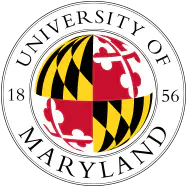
Within the clark school’s Innovation Hall of Fame (IHOF), David Bader (Ph.D. ’96)— the hall’s 2022 inductee— joins a distinguished community of inventors who use their knowledge, perseverance, innovation, and ingenuity to change the world. Bader “democratized” supercomputing by designing the first Linux Supercomputer RoadRunner for open use by the national science and engineering community from a prototype he built in 1998 using commodity off-the-shelf parts. His computer was first used in April 1999; the top 500 supercomputers operating in the world today have roots in Bader’s early work. In a Q&A, Engineering at Maryland asks Bader about his path to IHOF:
You learned to program before you could read or write. How did this shape the direction of your future work?
My father was a physical chemist and an early computational scientist and my mother is an inorganic chemist, so they both get a lot of credit for my appreciation of the sciences and engineering. In the 1970s, “programming” really meant the thoughtful use of resources, because every computer was limited in terms of memory size, cost of operations, etc. It set me in a direction of thinking about algorithms and how we can accelerate algorithms to run even faster.
Your work on supercomputers and high-performance computing began in the 90s. What drove you?
At the time, I had a couple areas of focus that I was very passionate about; one was thinking about our nation’s security and how we spread peace to everyone on the planet. For me, understanding large data sets was important. Exploring data sets from remote sensing of the Earth, biological sequences, and social networks led the way to what we see today with big data and the massive scale of data science, high performance data analytics, and the area that I’ve pioneered in massive graph analytics. As we have access to more and more data sets, we can now think about the power of combining these together to solve today’s global grand challenges. To me, that’s just a tremendous opportunity to improve the world and to make it a better place for everyone.
Why was “democratizing” supercomputers important to you?
I grew up in a first-generation American family. My mother was a child Holocaust survivor from Europe, and my dad’s parents immigrated to the United States. In the late 1970s when I was in 5th grade, I started delivering newspapers to earn enough money to buy my own computer. In the early 1980s I discovered parallel computing, but to get into supercomputing you needed millions of dollars to buy a unique commercial system. I had a passion to harness multiple processors together to solve important and computationally demanding problems, and I recognized early that this would require harnessing the economics of commodity-based systems to make supercomputing ubiquitous. To me, democratizing supercomputers means making them accessible to anyone in the world who wishes to work on these kinds of big problems. Solutions to real-world grand challenges can come from anyone, not just from people who can afford million-dollar supercomputers.
What do you hope for the future?
I would like to see the continued leveraging of commodity technologies and miniaturization of technologies so that we could deploy supercomputers ubiquitously. These systems must integrate new architectures that combine scientific computing capabilities with new technologies for supporting data science, machine learning, and artificial intelligence. There are so many phenomenal uses that if everyone had access to a supercomputer—maybe we will see them in our next generation of smartphones—then we would see a tremendous amount of change. That’s really my dream: to make supercomputing access as simple as driving a car or reading a book or carrying your smartphone, so that everyone with a question can solve real-world grand challenge problems quite easily
https://view.publitas.com/umdclarkschool/fall-2022-engineering-at-maryland-magazine/page/26-27